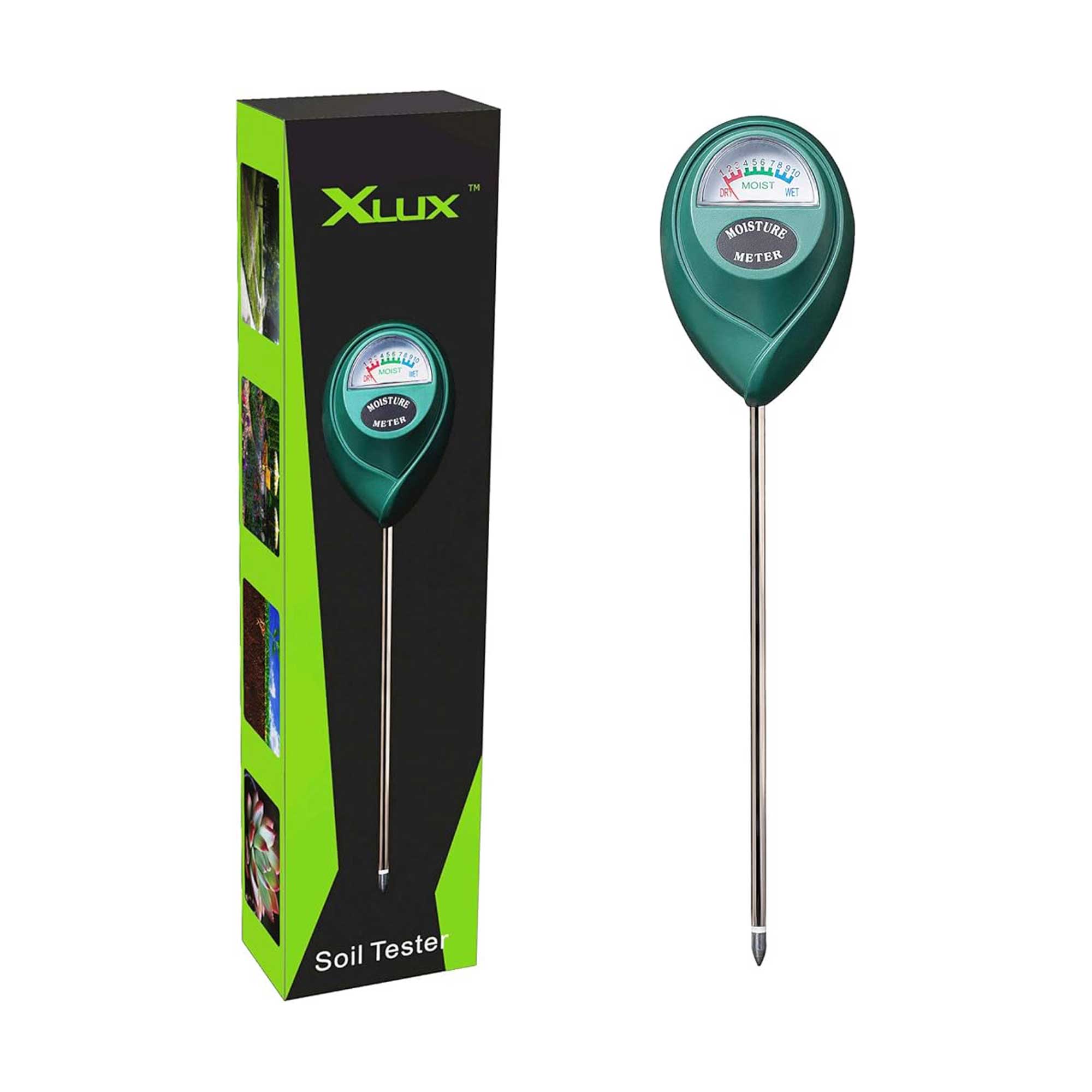How to grow coral bells in pots – an expert shares top tips for a fabulous container display
Brighten a shady patio or windowsill with coral bells, a perennial that's well-loved for its vibrant foliage and delicate blooms
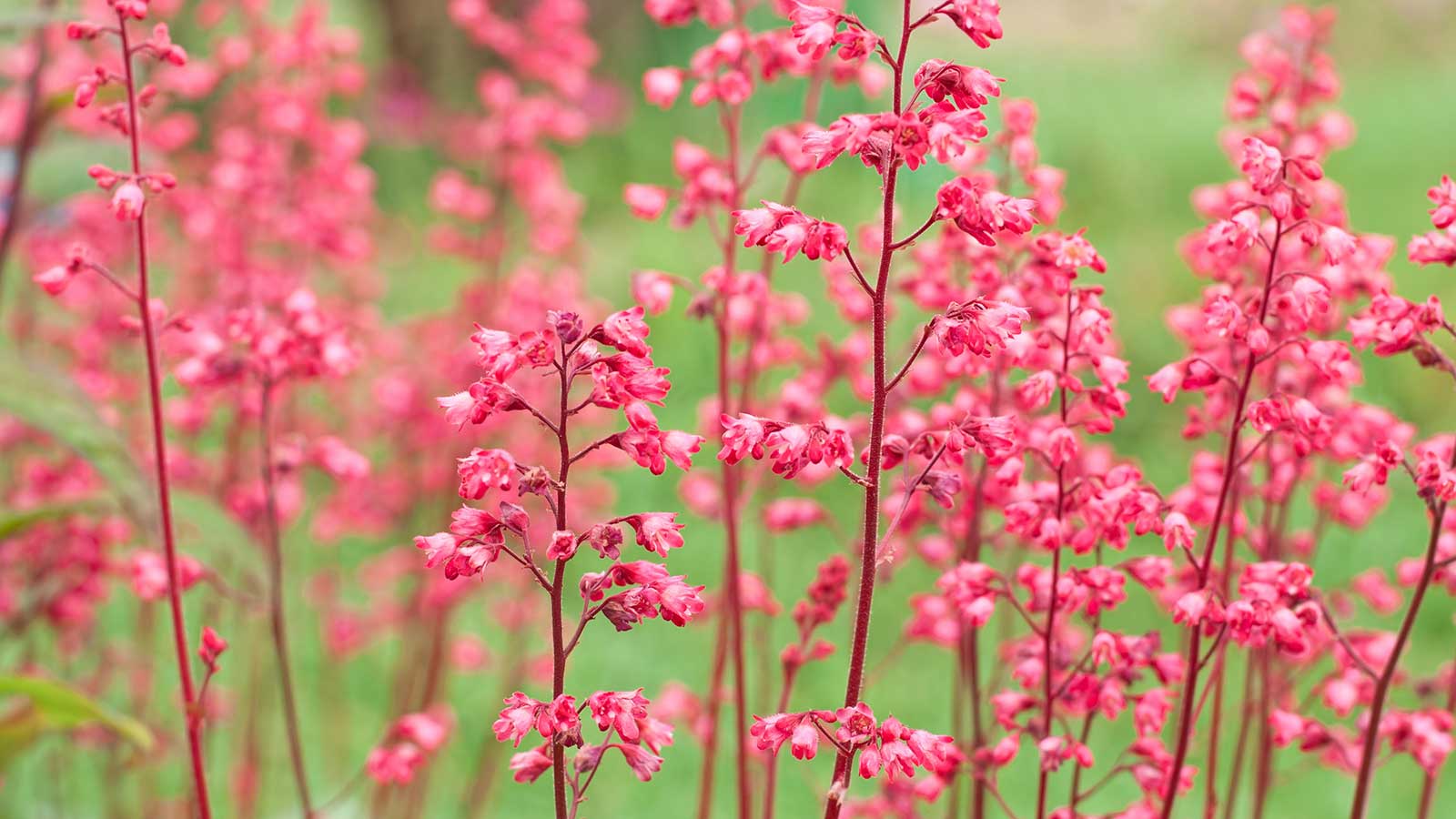

Coral bells, or heucheras, are fantastic foliage plants, offering a spectrum of shades from lime to burnt orange to deep purple, depending on variety. As evergreens (or semi-evergreens), this riot of color is long-lasting, and because they're perennials, they will continue to perform year after year. They also have tall and delicate flower spikes throughout the warmer months, which happen to be great for pollinators.
Due to their neat and attractive growth habit, many gardeners choose to grow coral bells as edging plants or ground cover toward the front of borders. As they do well in dappled shade, they can also thrive in woodland schemes. However, coral bells also make excellent container plants – particularly in smaller, urban plots where sunlight is often limited.
There are a few things to keep in mind when growing coral bells in pots, to ensure they stay healthy for years to come. Below, you'll find plenty of tips on planting, watering, and more – with insights from a plant-care expert.
How to plant coral bells in pots

Ensure your pot has adequate drainage
A key element for successful container gardening is choosing pots with drainage holes. Make sure your pots are large enough for your coral bells, too – they'll need to comfortably accommodate the root balls, with a little extra room to allow for growth. Avoid choosing pots that are too large, though (known as overpotting). Excess soil can become waterlogged, which can be detrimental to your plants' health.
Choose a potting soil suitable for containers, rather than using soil dug from your backyard. Chuck Pavlich, director of new product development with Terra Nova Nurseries, says most heucheras need an organic, rich soil that drains well. 'A combination of coco coir, peat moss, and pumice or perlite is standard,' he says. 'If soil is cheap, it’s cheap for a reason.'
Plant your coral bells at the same depth as they were in their original pot, as planting too deeply can cause problems with rot. Once planted, gently firm them in and water.
Coral bells are some of the best shade plants, so keeping the pots somewhere with partial shade will suit most varieties. But, some can tolerate more sun, so check the label on your chosen variety.
Design expertise in your inbox – from inspiring decorating ideas and beautiful celebrity homes to practical gardening advice and shopping round-ups.

Educated at Washington State University, Chuck Pavlich has worked in the retail nursery business for 30 years. Chuck brings his passion for plants to Terra Nova®. As the director of new product development, he is responsible for new ideas for the breeders as well as overseeing the breeding process and shepherding new products to the world perennial market.
How often to water coral bells in pots
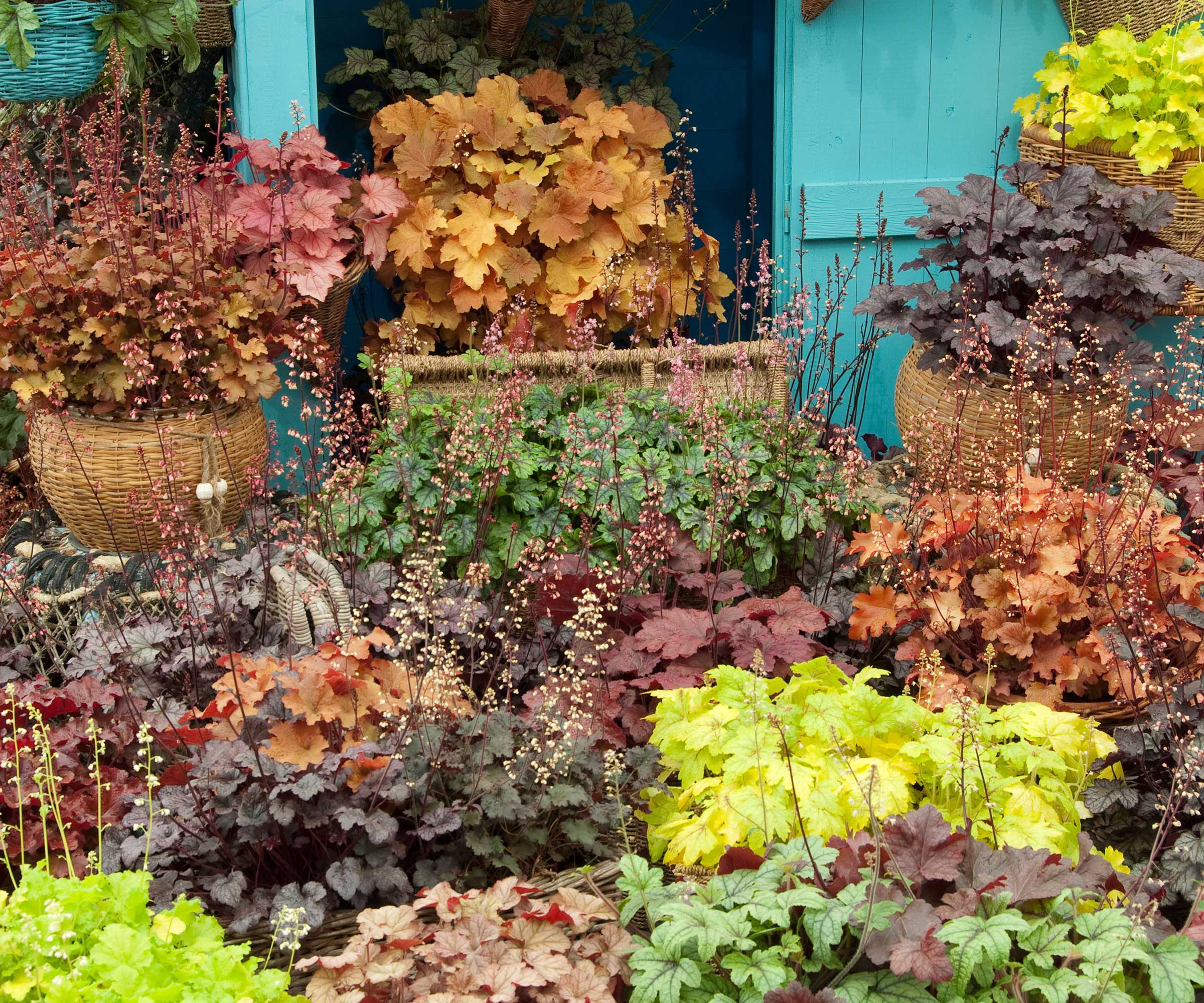
Avoid waterlogging the soil
In terms of watering these plants in pots, it's important to note that coral bells don't like sitting in soggy soil. In fact, they are relatively drought-tolerant once established.
'Heucheras should be watered as often as they need it,' says Chuck. 'There is no accurate timeline for watering any plant. The determining factors include sun or shade, co-planting or solitary, plastic or clay pot, and what type of potting soil is used.'
Chuck warns that constant moisture in a container can bring on root rot and make coral bells more susceptible to insect damage. He recommends using both sight and touch, by checking for slight wilting before watering, and feeling the soil. You could also use a soil moisture meter to quickly assess whether your plants need a drink.
Remember, though, that plants in pots tend to dry out quicker than those in the ground. So, try not to totally neglect them, especially during hot, dry spells.
How to fertilize coral bells in pots
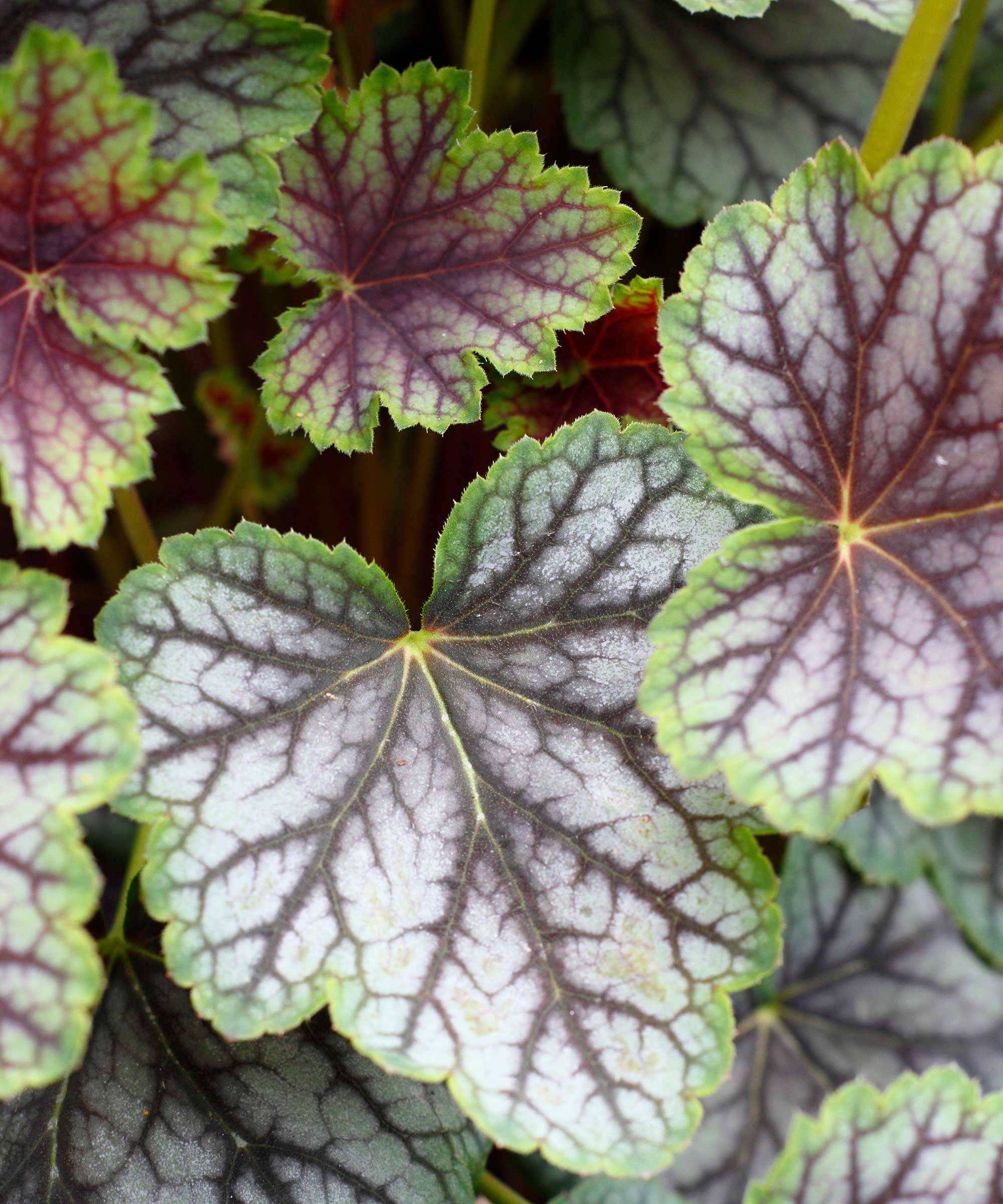
Pot-grown plants can benefit from a nutrient boost
Chuck recommends using a slow-release fertilizer early in the spring, just as the plants are waking up. 'Use very little feed during the summer,' he adds. 'Occasional feeding with liquid feed is acceptable, especially if there are other types of plants in a mixed container.'
For a slow-release feed, try Miracle-Gro's Shake 'N Feed All Purpose Plant Food, which is available from Amazon. For a liquid feed, try their organic plant food, also from Amazon.
Winter care for coral bells in pots
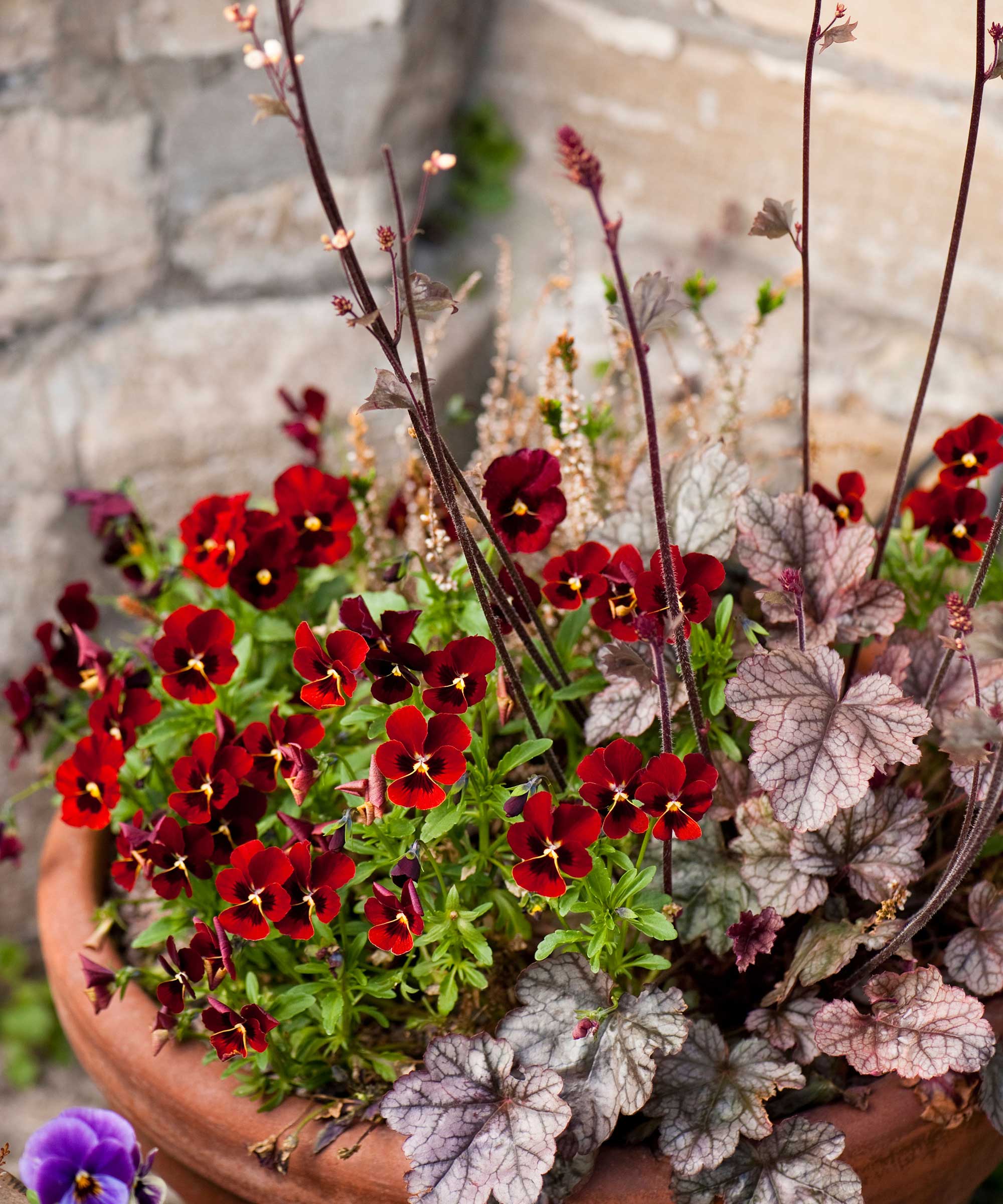
Pairing coral bells with violas makes for a pretty spring or fall display
Coral bells are generally hardy in USDA zones 4-9, so they can withstand winters in many regions. However, in very cold and dry climates, Chuck recommends either moving the containers to a sheltered spot or covering them with evergreen boughs to save the foliage from burning from the winter winds.
Remember to keep an eye on how wet the soil is, too. If heavy rain is making it waterlogged, it's best to move the pots somewhere more sheltered.
Don't be tempted to cut back your coral bells' leaves before (or during) winter. Leaving them intact will help to protect the plants from colder weather. If they need a tidy-up, wait until spring instead.
FAQs
What are some recommended varieties of coral bells to grow in pots?
All coral bells tend to have compact growth habits, making them a great choice for pots. There are lots of heuchera varieties available, allowing you to pick one with foliage that will complement your chosen color scheme.
'Most modern hybrids are complex hybrids with sometimes five or six species involved,' says Chuck. 'This enables them to be successful in many different conditions,' he explains.
His favorite series for container growing is the "Northern Exposure™" series. 'Bred to tolerate cold climates, these garden gems also thrive in heat and humidity and sun to shade conditions. Foliage colors in this series include red, amber, lime, purple, silver, and black,' he says.
'Some of my other favorites include "Paris" for its spectacular floral display and silver-green leaves, "Forever® ‘Purple'" for its glossy, year-round purple foliage, and "Green Spice", for its cool, subtle foliage in shades of silver, pine green, maroon, and black.'
What can you plant alongside coral bells in pots?
'Combining perennials with other perennials is usually a safe bet,' says Chuck. 'Try combining heucheras with trailing heucherellas, planted at the edge of the container, so that they trail down gracefully.'
Other great, long-lasting combo plants he recommends include agastache 'for an eye-popping floral show'; bergenia, a distant cousin of heuchera that flowers beforehand; brunnera for their 'stunning silvery foliage', and dicentra. He says: 'My favorite is "Amore Titanium". This dicentra is particularly heat-tolerant and is exceptionally free-flowering.'
Overall, growing coral bells in pots is straightforward, especially with the tips above in mind. If you're a beginner gardener or too busy for constant plant care, they're a great contender to consider for your space. And if you're looking for other low-maintenance plants for pots or even patio plants that thrive on neglect, our guides have plenty more suggestions.

Holly started writing about gardening five years ago, and she is a regular contributor to Homes & Gardens. She has also written many gardening features for Woman & Home and Real Homes, too. She has previous experience as a professional gardener, where she helped to plant and maintain private gardens. Holly has also looked after allotment plots over the years and loves to grow her own flowers and veggies from seed. In her spare time, she enjoys visiting local gardens, botanical drawing, and tending to her ever-growing collection of houseplants.
